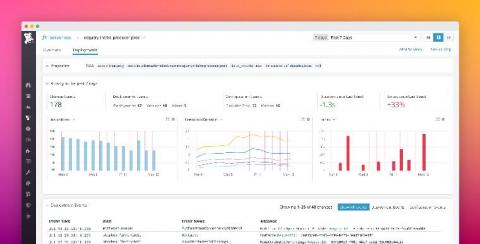Operations | Monitoring | ITSM | DevOps | Cloud
Serverless
The latest News and Information on Serverless Monitoring, Management, Development and related cloud technologies.
Why we built a Jamstack site
Last month, inspired by JamstackConf I built Jamstackery.website. This mini-site runs on AWS, and is managed by our platform. Our hope is that this mini-site demonstrates the promise of an architecture that blends containers with functions, and all the supporting certificates, permissions, and resources necessary to provide a world-class infrastructure.
FaaS Vs. Serverless: Resolving the Dilemma
In the vast ever-changing world of technology, Serverless and Faas are the two new categories of cloud computing services. Both FaaS and Serverless have helped organizations in saving money, refocusing developers’ time, relegating infrastructure management, and harnessing cloud technology. However, while both are treated as the same, there is a slight difference. Through this post, we will shed light on the similarities and differences between FaaS vs.
Using the Stackery Design Canvas
Azure Logic Apps 101 - Developer tools: what are my options (Part II)
The Future of Ops Careers
Have you seen Lambda: A Serverless Musical? If not, you really have to. I love Hamilton, I love serverless, and I’m not trying to be a crank or a killjoy or police people’s language. BUT, unfortunately, the chorus chose to double-down on one of the stupidest and most dangerous tendencies the serverless movement has had from day one: misunderstanding and trash-talking operations.
Best Practices of Serverless at Scale
Share A serverless application in its infancy looks and runs vastly different to one at scale. When there are more components to manage, the key to operational excellence is rooted in serverless best practices. Dashbird was created with the mission to help developers succeed with modern cloud environments, no matter their size. As experienced developers ourselves, we’ve faced and understand the challenges found in the functionality of at-scale serverless architecture.
Monitor serverless configuration changes with Datadog Deployment Tracking
Serverless architectures remove the need to provision and maintain infrastructure components like servers and containers, so developers can focus on writing and deploying code. However, serverless architectures also introduce new challenges to monitoring and observability. Teams building serverless applications can iterate quickly and deploy frequent code and configuration changes, making it difficult to track what impact these changes have on your applications.
How Dashbird Atlas Accelerates Serverless Observability
Share When it comes to serverless applications, their distributed nature of exponential scalability and use of potentially thousands of resources automatically begs the need for observability. Using the mass data output of an application to understand and optimize the internal states is a game-changing strategy, but only if used well. Dashbird Atlas takes serverless observability to a new level, reducing excessive noise through simple visualization of your application.
What You Need to Know About Serverless Security
Developers at Airbnb, BBC, Netflix, and Nike all share something in common: They’re using serverless computing to ship new products and features faster than ever. And they represent a growing trend. As businesses compete to quickly deliver customer value, a whopping 60% of enterprises have already adopted, or are planning to use, serverless architectures.










